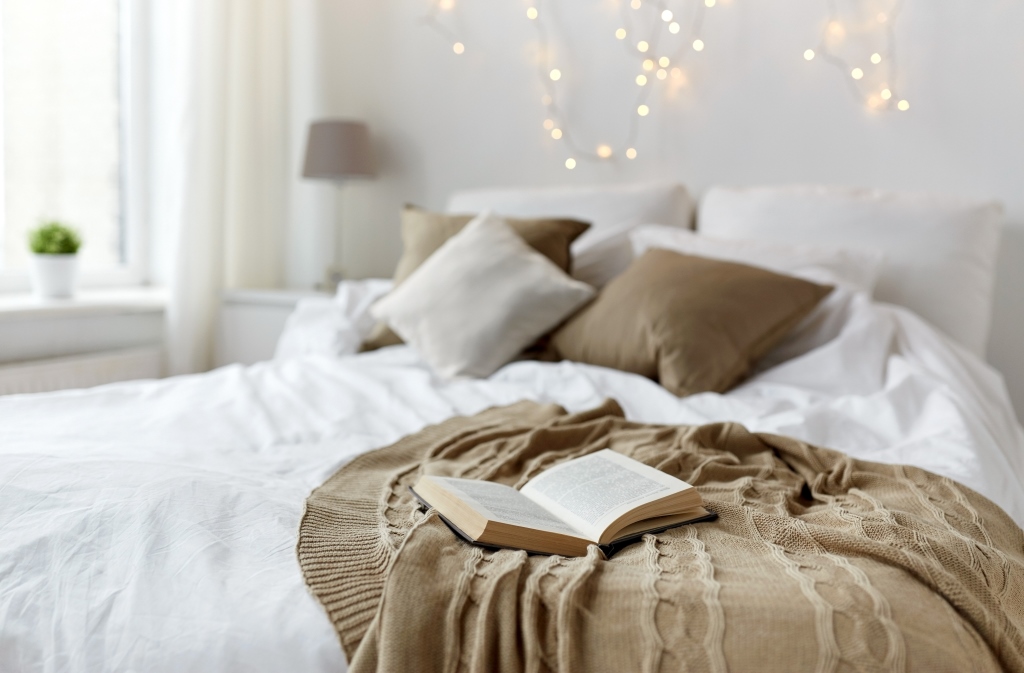Creating the perfect bedroom is not just about having a comfortable place to sleep; it’s about crafting a sanctuary where you can relax, rejuvenate, and express your style. Whether you’re starting from scratch or giving your bedroom a makeover, this comprehensive guide will walk you through everything you need to know to design your dream bedroom.
Setting the Foundation: Choosing the Right Bed
The bedroom is centered around the bed, so it’s essential to choose the right one. Consider factors such as size, style, and comfort level. From classic canopy beds to modern platform frames, there are endless options to suit your taste and space requirements. Don’t forget about the mattress and bedding—investing in high-quality materials can make all the difference in your sleep quality.
Creating a Relaxing Atmosphere with Lighting
Lighting sets the mood in any bedroom. Opt for a combination of ambient, task, and accent lighting to create a layered and versatile space. Dimmer switches are a great way to adjust the lighting to suit different activities, from reading to unwinding before bed. Incorporating natural light with well-placed windows or skylights can also enhance the overall ambiance of your bedroom.
Maximizing Storage Solutions
Clutter can disrupt the tranquility of your bedroom, so it’s essential to maximize storage options. Consider built-in closets, under-bed storage bins, and multifunctional furniture pieces like storage ottomans or bedside tables with drawers. Keeping your bedroom organized will not only make it look better but also make it easier to maintain a peaceful atmosphere.
Infusing Personal Style with Decor
Your bedroom should reflect your personality and style preferences. Incorporate colors, patterns, and textures that resonate with you to create a space that feels uniquely yours. From bold accent walls to cozy throw pillows, don’t be afraid to experiment with different decor elements to make your bedroom feel like home.
Enhancing Comfort with Textiles
Soft textiles can add warmth and comfort to your bedroom. Invest in high-quality bedding, curtains, and rugs to create a cozy oasis where you can unwind at the end of the day. Consider layering different textures for added visual interest, such as a plush rug over hardwood floors or a mix of linen and velvet throw pillows.
Incorporating Functional Furniture
In addition to the bed, consider incorporating other functional furniture pieces into your bedroom design. A comfortable seating area can provide a cozy spot for reading or relaxing, while a desk or vanity can serve as a dedicated workspace or grooming station. Choose pieces that not only look great but also serve a practical purpose in your bedroom layout.
Adding Personal Touches
Finally, don’t forget to add personal touches that make your bedroom feel like your own. Display photographs, artwork, or mementos that hold special meaning to you. Consider incorporating plants or fresh flowers to bring a touch of nature indoors. Ultimately, your bedroom should be a reflection of your individuality and a place where you feel completely at ease.
Selecting the Perfect Color Scheme
The color scheme you choose for your bedroom can significantly impact the overall atmosphere. Opt for calming hues like soft blues, greens, or neutrals to create a serene environment conducive to relaxation. Consider using accent colors sparingly to add pops of visual interest without overwhelming the space. Keep in mind that different colors can evoke different emotions, so choose shades that promote tranquility and comfort.
Incorporating Feng Shui Principles
Feng Shui is an ancient Chinese practice that focuses on harmonizing individuals with their surroundings. Incorporating Feng Shui principles into your bedroom design can promote positive energy flow and enhance overall well-being. Position your bed in the commanding position, with a clear view of the door but not directly in line with it. Use elements such as mirrors, plants, and artwork strategically to create balance and harmony in your bedroom.
Investing in Quality Bedding
The quality of your bedding can significantly impact your sleep quality and overall comfort level. Invest in high-quality sheets, pillows, and duvets made from natural materials like cotton or linen. Consider factors such as thread count, fabric weave, and breathability to ensure maximum comfort and durability. Don’t overlook the importance of a supportive mattress and ergonomic pillows to promote proper spinal alignment and minimize discomfort during sleep.
Creating a Technology-Free Zone
In today’s digital age, it’s tempting to bring electronic devices like smartphones, tablets, or TVs into the bedroom. However, excessive screen time before bed can disrupt sleep patterns and hinder relaxation. Create a technology-free zone in your bedroom by removing or limiting the use of electronic devices. Instead, incorporate analog activities like reading, journaling, or meditation to promote restful sleep and reduce stress levels.
Establishing a Relaxing Bedtime Routine
Establishing a relaxing bedtime routine can signal to your body that it’s time to wind down and prepare for sleep. Create a ritual that incorporates activities like gentle stretching, deep breathing exercises, or a warm bath to promote relaxation. Limit stimulants like caffeine or heavy meals close to bedtime, and avoid engaging in stimulating activities like work or intense exercise. By prioritizing self-care and relaxation before bed, you can set yourself up for a restful night’s sleep.
Conclusion
Designing your dream bedroom is a deeply personal and rewarding endeavor. By incorporating elements like comfortable bedding, soothing lighting, and personalized decor, you can create a space that promotes relaxation, rejuvenation, and well-being. Remember to prioritize comfort, functionality, and personal style to design a bedroom that truly feels like home.





